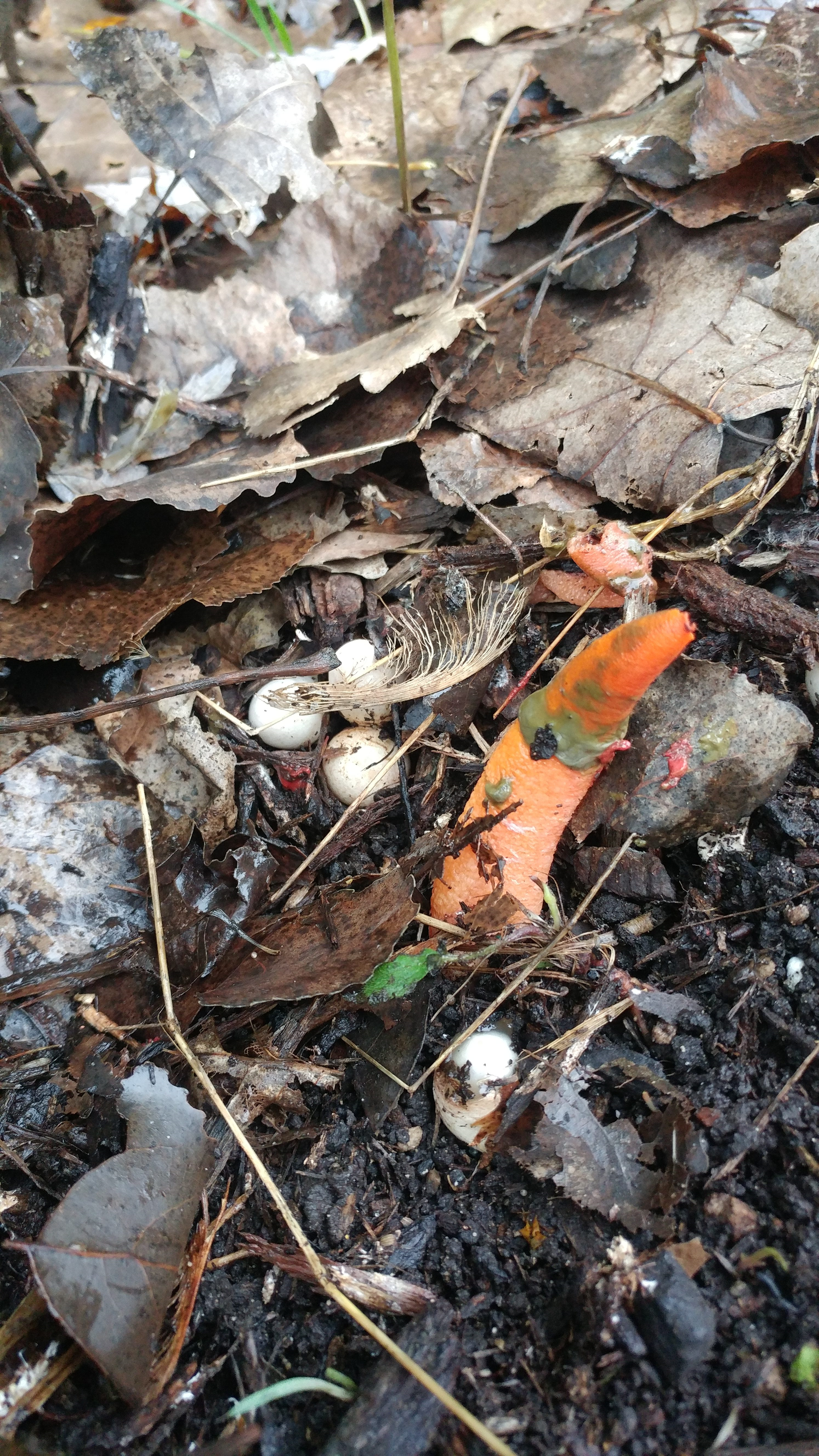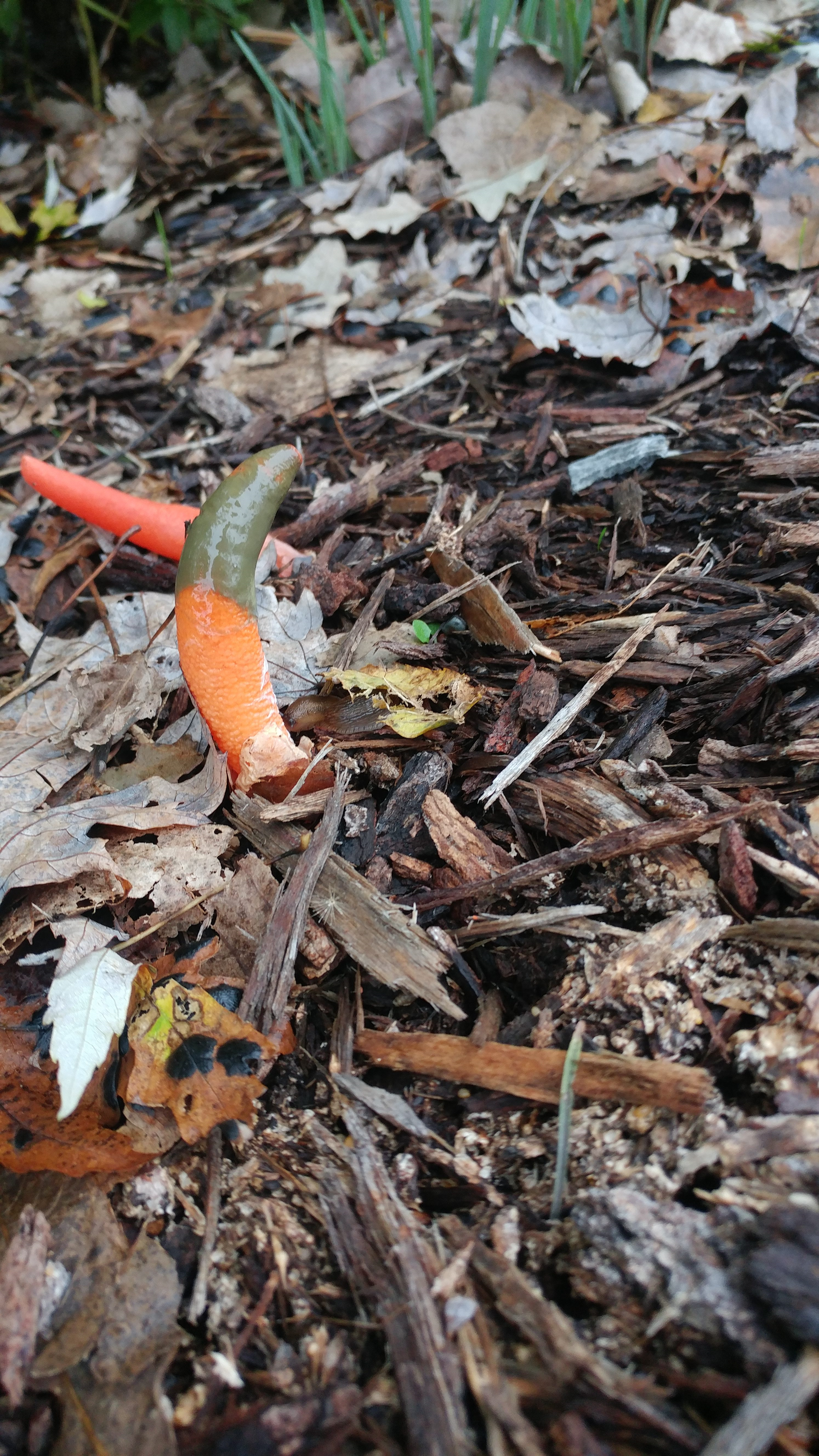Mutinus Elegans
Mutinus elegans (Montagne) E. Fischer is a member of the stinkhorn group of mushrooms, which are similar in appearance and stench bu are in two separate genera.

Mutinus elegans (Montagne) E. Fischer is a member of the stinkhorn group of mushrooms, which are similar in appearance and stench bu are in two separate genera. These mushrooms are distinct from the genus Phallus due to the lack of a separate, distinct cap (Fig 1). There are many common names that all reference M. elegans, including Elegant stinkhorn, Dog stinkhorn, and Devil’s dipstick.
M. elegans grows in mulch, often in flower beds (Fig 2). Although many gardeners try to rid themselves of the smelly fungi, it’s nearly impossible to do without paving over the garden bed. These fungi are saprobic, often found in the fall in the northern United States. The stink is to attract flies, which carry sticky spores to new locations. The green slimy bit observed at the top of the fruiting body contains the spores, which are oblong, 4-7 um in length and 2-3 um across. The fruiting body develops from “eggs’, white round structures that reveal an immature fruiting body. Once these fruiting bodies emerge, they are pink to red in color, with a finely pitted surface. M. elegans is distinguished from the other species in the genus by the taper to the end of the fruiting body, the finely pitted surface (as opposed to larger pits in some species), and the spores are typically larger than other species. This species was first described in 1888, and has changed taxonomy a few times, until it was definitively placed in 2006.
Taxonomy:
- Phylum: Basidiomycota
- Class: Agaricomycetes
- Order: Phallales
- Family: Phallaceae
- Genus: Mutinus
- Species: elegans


References:
- MushroomExpert.com
- Mutinus elegans
- University of Illinois Press Blog
- Saccardo, P.A. 1888. Sylloge Fungorum. 7 1 882



 Print
Print Email
Email



